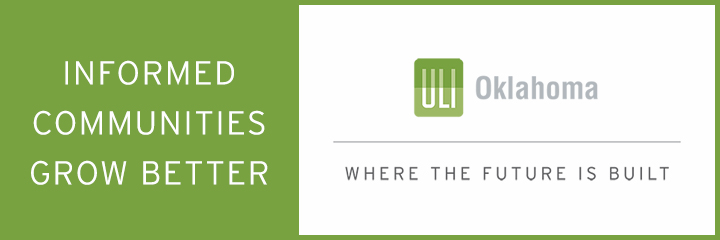
Alina Tugend’s article in Sunday’s New York Times Magazine, Who Benefits from the Expansion of AP Classes?, explains why advanced placement (AP) controversies are relevant for the Oklahoma City Public School System.
As Tugend writes, AP expansion:
… raises questions that are as tangled as any about race, class and education in this country. Critics of the program see the A.P.’s expansion as a boondoggle, with scarce resources being thrown at a program that simply wasn’t designed to address the systemic problems facing public education — at a real cost to these students.
Washington, D.C., is the poster child for test-driven school reform. Further in the article, D.C.’s chief of teaching and learning, Brian Pick, explains why a huge investment has been made in dramatically increasing the number of poor children of color taking the test. He is half-right in saying, “We all have a deeply held belief that if you set high expectations for kids, they will rise to them, from what course they’re in to what assignment they get.” But, as Diane Ravitch explains in the same article, “The A.P. has become a cash cow for the College Board. If it really wants to promote equity, offer the tests for free.”
Tugend further explains:
Of the College Board’s total $916 million in revenue in 2015, $408 million came from fees for the test and instructional materials. (Next year, the test fee will be $94.) The A.P. could become even more important as an income generator in the face of financial and brand challenges for the organization. The College Board also administers the SAT, which has been losing ground in recent years to the ACT.
Achievement gap firmly in place well before AP
Tugend describes a class of 28 low-income students in D.C.’s low-performing Woodson High School. The teacher is quoted as saying, “I’ve got five to six kids reading on grade level, and three of those don’t show up … The rest are significantly below grade level.”
I’ve taught AP and regular classes, but I’ve never had a regular class with that many kids reading at grade level.
The same class described by the Times Magazine had a pass rate of 7 percent. The high school’s overall pass rate was 2.5 percent, with four students out of 162 who took the exams passing.
It could be argued that an exposure to AP is valuable in itself regardless of the test results. I appreciate that view, but a 2015 study in Howard University’s Journal of Negro Education found that such claims “… by the College Board do not mirror the lived experiences of black and Hispanic student groups.”
The Times article also notes that there are far more cost-effective ways of tackling the achievement gap. It reminds us that,
The academic achievement gap, according to most research, usually begins before children even enter school — and research has found that after third grade, on average, these disparities don’t change much.
Commenter: AP ‘enjoys a prestige beyond its merits’
An online reader drew upon her teaching experience to comment, “My observation … was that these low income students benefited more from taking community college courses while in high school.”
Another comment speaks to the fundamental flaw with expanding college-readiness testing, explaining that AP:
… enjoys a prestige beyond its merits. Its syllabus is overstuffed with topics. Thus there is no time for students to develop conceptual understanding and it’s mostly taught by the ineffective method of lecturing. The AP course is fundamentally more directed at the memorizing answers and less to goal of building functional knowledge.
The teacher featured in the Times article gets to the heart of the issue. She thinks:
Schools embrace A.P. in large part due to the drive for ‘rigor’ and the lack of interest in truly exploring what that means. It is easier for a district to purchase an outside program and its definition of rigor.
This brings us to the half of the D.C.-reform mentality that is dead wrong. Children will indeed rise to meet high expectations, but the “course they’re in” and “what assignment they get” matter greatly. Like other urban districts, the OKCPS has a long history of failure in repeatedly expanding AP in the name of expanding “rigor.”
Rigor is only part of the equation
In the early 1990s, I was recruited to John Marshall to teach AP. My job was to offer compelling and challenging learning opportunities to low-skilled as well as advanced students but without worrying about test outcomes. My in-school and central office evaluators were pleased with our results, but teaching to AP materials without adopting its test-driven pacing turned out to be politically unsustainable. On the other hand, I learned that many AP lessons were invaluable resources for teaching all classes.
As John Marshall improved (and as I won teaching awards that would cover our rear ends), I took over a senior-level AP course in government. It wasn’t just the AP test questions that the students couldn’t read for comprehension: Each student found their junior-level AP U.S. history textbook and tried, unsuccessfully, to read and explain paragraphs from their previous year. We had an honest conversation about the ways they had focused on answering 11th-grade questions without understanding the key concepts. We then had a month of uncomfortable discussions about the standards they were supposed to master.
My students and I had enjoyed excellent relationships with each other, but, after a couple of months, we were getting on each others’ nerves. I asked whether they wanted to continue down the AP path or turn the class into an honors course. The response was unanimous for the latter. We then shared an incredible year of meaningful learning, using AP and honors materials and test questions as well as government lessons torn from the post-9/11 headlines.
In other words, rigor is just one small part of what it takes to learn for mastery on a college-readiness level. It’s not nearly as important as cultivation of good classroom habits and the love of learning. AP curriculum and tests are great tools to teach with, but they aren’t the best thing to teach to. Inner-city kids will best rise to the challenge when we respect their minds instead of just the competitive parts inside their brains.






















